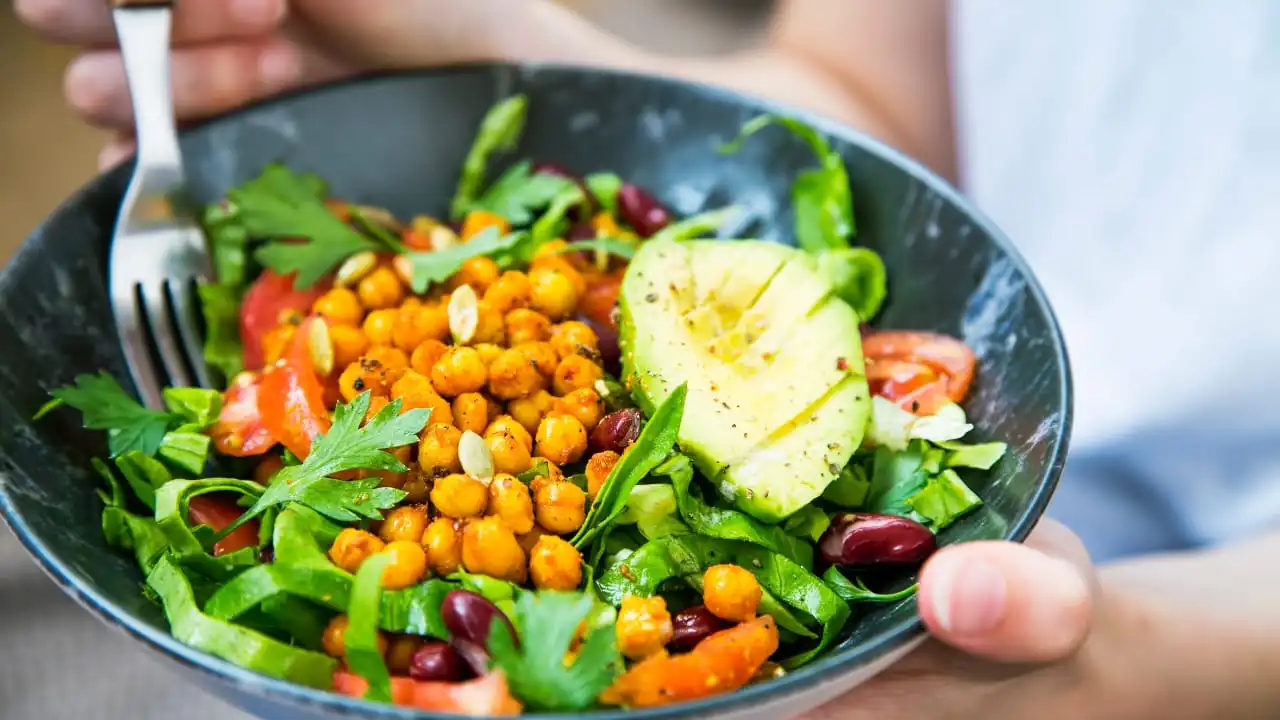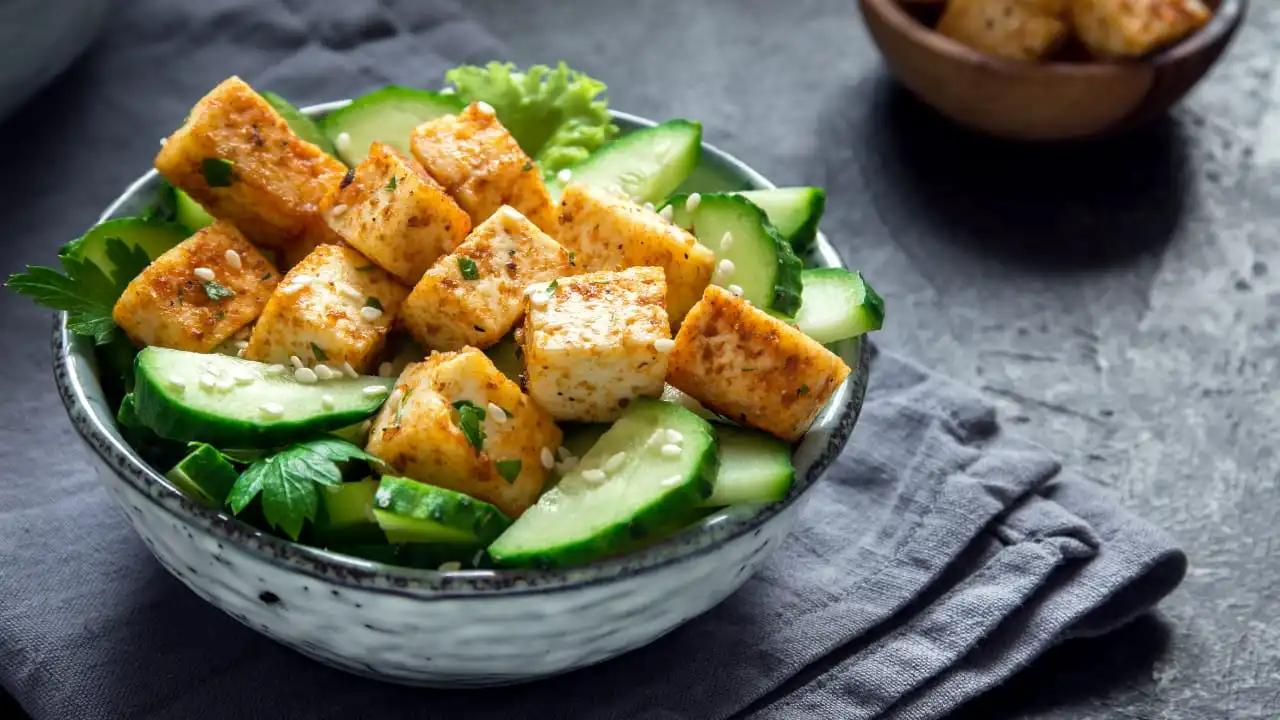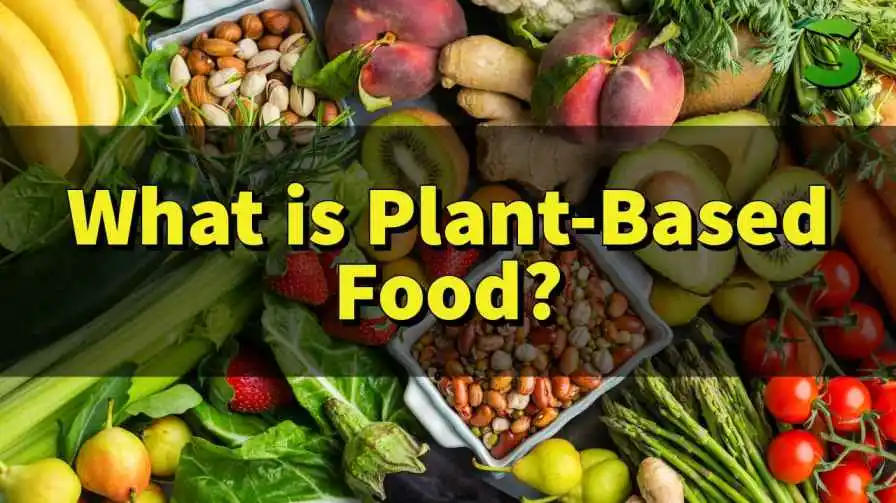In a world increasingly conscious of health and sustainability, the spotlight is on “what is plant-based food.” This article dives deep into the green revolution, uncovering the myriad aspects of plant-based food, from their definition to their far-reaching benefits.

Plant-Based Diets: An Overview
Plant-based diets, often misunderstood, extend far beyond the notion of mere salads. To truly comprehend what constitutes plant-based food, one must acknowledge the significant shift towards predominantly consuming items derived from plants.
The Green Shift
Understanding plant-based diets requires recognition of “The Green Shift.” This isn’t merely a change in dietary preferences; it represents a holistic lifestyle shift. Individuals embracing plant-based diets move away from the conventional reliance on animal products, prioritizing fruits, vegetables, legumes, and whole grains.
Nutritional Powerhouse
Embarking on a plant-based journey unlocks a nutritional powerhouse. Contrary to common misconceptions, plant-based food offer a rich tapestry of vitamins, minerals, and antioxidants. From vitamin C in citrus fruits to iron in leafy greens, these diets provide a diverse array of essential nutrients vital for optimal health.
Environmental Impact
Beyond individual health benefits, plant-based diets play a pivotal role in shaping a sustainable future. This section delves into the environmental impact of choosing plant-based foods. Opting for plant-derived alternatives contributes to environmental conservation by reducing our carbon footprint, minimizing water usage, and promoting biodiversity.
Exploring Plant-Based Alternatives
In the realm of plant-based living, the exploration of alternatives extends beyond the ordinary, offering a diverse and flavorful palette that transcends traditional perceptions of dietary choices.

1: Beyond Tofu: A Diverse Palette
Exploring the vast landscape of plant-based living unveils a diverse and enticing palette that goes far beyond the often stereotyped image of tofu-laden plates. Let’s embark on a journey that celebrates the richness and variety inherent in plant-based alternatives.
The World of Grains: Quinoa and Beyond
Plant-based diets thrive on a foundation of grains, and quinoa takes center stage as a nutritional powerhouse. Beyond its nutty flavor and versatile texture, quinoa offers a complete protein source, making it a valuable addition to plant-based meals. Other grains like farro, bulgur, and freekeh add depth and variety, ensuring a satisfying and nourishing dining experience.
Protein-Rich Legumes: Lentils Take the Lead
Lentils, often underrated, emerge as protein-packed champions in the plant-based realm. These legumes come in various colors and sizes, offering versatility in both taste and texture. From red lentil curry to hearty lentil soups, the culinary possibilities are vast. Chickpeas, black beans, and edamame further enrich the protein content, turning plant-based meals into a flavorful and satisfying feast.
Roots and Tubers: Nature’s Bounty
Root vegetables and tubers contribute heartiness and substance to plant-based dishes. Sweet potatoes, with their natural sweetness and vibrant orange hue, become a staple, whether baked, mashed, or incorporated into curries. The humble beetroot adds a splash of color and earthiness, while versatile carrots and parsnips bring a comforting familiarity to diverse recipes.
Leafy Greens: From Salad to Main Course
Leafy greens go beyond their role in salads, evolving into main courses that showcase their nutritional prowess. Spinach, kale, and Swiss chard become the stars of savory pies, stir-fries, and flavorful sautés. Rich in vitamins and minerals, these greens elevate the nutritional value of plant-based meals, contributing to overall health and well-being.
Culinary Alchemy: Transforming Plant Ingredients
Plant-based living invites culinary alchemy, transforming simple ingredients into culinary delights. Whether it’s using cauliflower to create a delectable pizza crust or turning zucchini into pasta, the possibilities are endless. Embracing plant-based alternatives means embracing a world of creativity and innovation in the kitchen.
In navigating this diverse palette, plant-based living becomes a vibrant and fulfilling culinary adventure. The next segment will delve into the world of plant-based meat alternatives, exploring how innovation in this realm is reshaping the landscape of plant-based cuisine.

2: What is Plant-Based Meat?
The landscape of plant-based living has been revolutionized by the emergence of plant-based meat alternatives. But what exactly is plant-based meat, and how does it fit into the broader spectrum of plant-powered cuisine?
The Science Behind Plant-Based Meat
Plant-based meat is a culinary innovation that leverages plant-derived ingredients to replicate the taste, texture, and mouthfeel of traditional meat. The scientific process involves extracting proteins, often from sources like peas, soy, or wheat, and combining them with fats, flavorings, and colorings to mimic the sensory experience of consuming animal-based meat.
Burgers, Sausages, and Beyond
One of the most notable aspects of plant-based meat is its versatility. From burgers that sizzle on the grill to sausages that boast a savory kick, plant-based alternatives have expanded beyond the realm of traditional veggie burgers. Now, individuals can enjoy plant-based meat in various forms, from meatballs and nuggets to ground “beef” for tacos or spaghetti sauce.
Environmental and Health Benefits
The rise of plant-based meat aligns with both environmental and health-conscious considerations. Producing plant-based meat generally requires fewer resources and generates fewer greenhouse gas emissions compared to traditional meat production. Additionally, plant-based meat often offers a lower saturated fat content, making it a heart-healthy choice for those looking to reduce their intake of animal fats.
Culinary Innovation and Global Cuisine
Plant-based meat alternatives have become a canvas for culinary creativity. Chefs and food innovators worldwide are incorporating these alternatives into global cuisines, showcasing that plant-based living is not about sacrifice but rather a culinary adventure. Whether it’s a plant-based “chicken” curry or a “pulled pork” sandwich, the possibilities are expanding, making plant-based eating more accessible and enjoyable.
The Future of Plant-Based Eating
As technology advances and culinary expertise continues to evolve, the future of plant-based meat holds even more promise. The ongoing innovation in this space not only caters to those following a plant-based lifestyle but also entices traditional meat enthusiasts with options that are sustainable, ethical, and flavorful.
In the subsequent sections, we’ll delve into practical tips for embracing a plant-based lifestyle, ensuring a seamless transition for those exploring the diverse and exciting world of plant-based living.

Embracing Plant-Based Living
Transitioning to a plant-based lifestyle is not merely a shift in diet; it’s a holistic embrace of a sustainable, compassionate, and health-conscious way of living. In this section, we’ll explore practical tips and insights to facilitate a seamless and enjoyable journey into the world of plant-based living.
1. Diversify Your Plate
Embrace a spectrum of colors and textures by incorporating a variety of plant foods into your meals. From vibrant fruits and vegetables to wholesome grains, legumes, and nuts, a diverse plate ensures a well-rounded and nutritionally rich diet.
2. Master Flavor Enhancers
Elevate the taste of your plant-based dishes with the magic of herbs, spices, and condiments. Garlic, ginger, cumin, and an assortment of herbs can add depth and complexity to your creations, making every bite a sensory delight.
3. Incorporate Plant-Based Proteins
Ensure an ample intake of protein by incorporating plant-based sources like tofu, tempeh, legumes, and quinoa into your meals. These protein-rich ingredients not only provide essential nutrients but also contribute to the satisfying and hearty nature of plant-based cuisine.
4. Get Creative with Plant-Based Alternatives
Explore the ever-expanding world of plant-based meat substitutes and dairy alternatives. From burgers and sausages to non-dairy cheeses, these options offer familiar flavors while aligning with a plant-based lifestyle. Let your creativity flourish as you experiment with these innovative alternatives.

What is Plant-Based Food: A Culinary Adventure
Embarking on a plant-based culinary adventure isn’t just a shift in diet; it’s a journey that opens the door to a world of flavors, creativity, and wholesome nourishment. Let’s explore the essence of what plant-based food truly means and the exciting culinary expedition it invites us to undertake.
The Canvas of Flavors
Plant-based food is a canvas adorned with an array of vibrant colors, textures, and tastes. It goes beyond the mundane and challenges preconceived notions about what a meal should look and taste like. From the earthy richness of roasted vegetables to the zing of citrus-infused salads, each dish becomes an expression of culinary artistry.
A Symphony of Ingredients
In the realm of plant-based cuisine, ingredients become the stars of the show. Fruits, vegetables, grains, legumes, nuts, and seeds form a symphony of flavors, offering a diverse range of nutrients and tastes. It’s not just about sustenance; it’s about savoring the natural goodness that nature provides.
Innovation and Creativity
Plant-based living encourages innovation and creativity in the kitchen. It’s an opportunity to reimagine familiar dishes with a plant-powered twist. Cauliflower becomes a versatile substitute for pizza crust, and zucchini transforms into pasta ribbons. The possibilities are endless, and the joy of experimenting with new recipes becomes an integral part of the culinary adventure.
Cultural Exploration
One of the remarkable aspects of plant-based living is its ability to transcend cultural boundaries. Global cuisines offer a treasure trove of plant-centric recipes. Whether it’s the spice-infused curries of India, the Mediterranean abundance of olives and herbs, or the hearty grains of East Asia, plant-based food invites us to explore and appreciate diverse culinary traditions.
Nourishing the Body and Soul
Plant-based food is not just about fueling the body; it’s about nourishing the soul. Each bite carries the vitality of whole, unprocessed ingredients that contribute to overall well-being. The awareness of making choices aligned with health, sustainability, and compassion adds an extra layer of satisfaction to every meal.
The Culinary Adventure Continues
As we delve deeper into the world of plant-based living, the culinary adventure unfolds with every recipe, every new ingredient, and every shared meal. It’s a journey of exploration, transformation, and a celebration of the abundance that nature graciously provides.
Frequently Asked Questions
As we navigate the intriguing realm of plant-based living, common questions often arise. Let’s address some of these FAQs to provide clarity and guidance for those curious or embarking on their plant-based journey.
Q: Are plant-based diets suitable for all ages?
Plant-based diets can be adapted for individuals of all ages, from children to seniors. However, it’s crucial to ensure that the diet is well-planned to meet specific nutritional needs at different life stages. Consulting with a healthcare professional or a registered dietitian can help tailor a plant-based approach to individual requirements.
Q: How do plant-based diets impact the environment?
Plant-based diets generally have a lower environmental footprint compared to traditional meat-based diets. Choosing plant-based foods contributes to reducing greenhouse gas emissions, minimizing water usage, and promoting biodiversity. This eco-friendly aspect makes plant-based living a sustainable choice for those environmentally conscious.
Q: Can I get enough protein from a plant-based diet?
Yes, plant-based diets can provide ample protein through sources like beans, lentils, tofu, tempeh, quinoa, and plant-based protein supplements. Combining a variety of these protein sources ensures that individuals meet their protein requirements without relying on animal products.
Q: What is the main difference between vegetarian and plant-based diets?
While both vegetarian and plant-based diets limit or eliminate meat consumption, the key difference lies in the focus of plant-based diets on whole, plant-derived foods. Vegetarian diets may include dairy and eggs, whereas plant-based diets emphasize fruits, vegetables, legumes, nuts, and seeds as primary sources of nutrition.
Q: Are there any potential health risks associated with plant-based diets?
When well-planned, plant-based diets are generally considered healthy and can provide all essential nutrients. However, individuals need to pay attention to certain nutrients like vitamin B12, iron, and omega-3 fatty acids, which may be obtained less readily from plant sources. It’s advisable to consult with a healthcare professional or a registered dietitian for personalized guidance.
Q: How can I transition to a plant-based diet smoothly?
Transitioning to a plant-based diet can be a gradual process. Start by incorporating more plant-based meals into your routine, experimenting with new recipes, and gradually reducing reliance on animal products. Online resources, cookbooks, and guidance from nutritionists can provide valuable support during this transition.
Conclusion
In the vibrant tapestry of plant-based living, our exploration has taken us through the diverse landscapes of flavors, nutritional richness, and the profound impact on personal well-being and the environment. As we conclude this journey, let’s recap the key insights and celebrate the essence of embracing a plant-based lifestyle.
1. The Green Shift: Understanding plant-based living involves acknowledging “The Green Shift” – a holistic move towards predominantly consuming plant-derived items. It’s not just a dietary choice; it’s a conscious shift encompassing health, environmental sustainability, and ethical considerations.
2. Nutritional Powerhouse: Plant-based diets emerge as nutritional powerhouses, offering a plethora of vitamins, minerals, and antioxidants. From the vibrancy of fruits and vegetables to the protein richness of legumes and grains, these diets provide a well-rounded source of essential nutrients.
3. Environmental Impact: Beyond personal health, plant-based diets contribute to a sustainable future by reducing carbon footprints, conserving water, and promoting biodiversity. Choosing plant-based foods becomes a meaningful step towards environmental conservation.
4. Culinary Adventure: Plant-based living unfolds as a culinary adventure, inviting us to explore a diverse palette of ingredients, innovative alternatives, and global cuisines. It’s an opportunity to savor the richness of plant-derived goodness in every meal.
5. Frequently Asked Questions: Addressing common queries, we clarified that plant-based diets are suitable for all ages when well-planned, have a positive environmental impact, provide adequate protein, and differ from vegetarian diets in their focus on whole, plant-derived foods.
As you embark on or continue your plant-based journey, remember that it’s not just about what you eliminate from your plate but the abundance of flavors, nutrients, and joy that you add to it. Whether you’re motivated by health, sustainability, or a desire for culinary exploration, plant-based living offers a path towards a more conscious and fulfilling way of life.
Thank you for joining us on this adventure into the world of plant-based living. If you’ve found inspiration or guidance in this exploration, we invite you to share the journey with others. Here’s to a vibrant, nourishing, and sustainable future through the embrace of plant-based living.
References:
- Harvard T.H. Chan School of Public Health – The Nutrition Source
- World Health Organization (WHO) – Nutrition
- Environmental Working Group – Meat Eater’s Guide
- Plant-Based News – Your Ultimate Source for Vegan News
ALSO READ | Sustainable Living vs. Fast Fashion: You Choose







